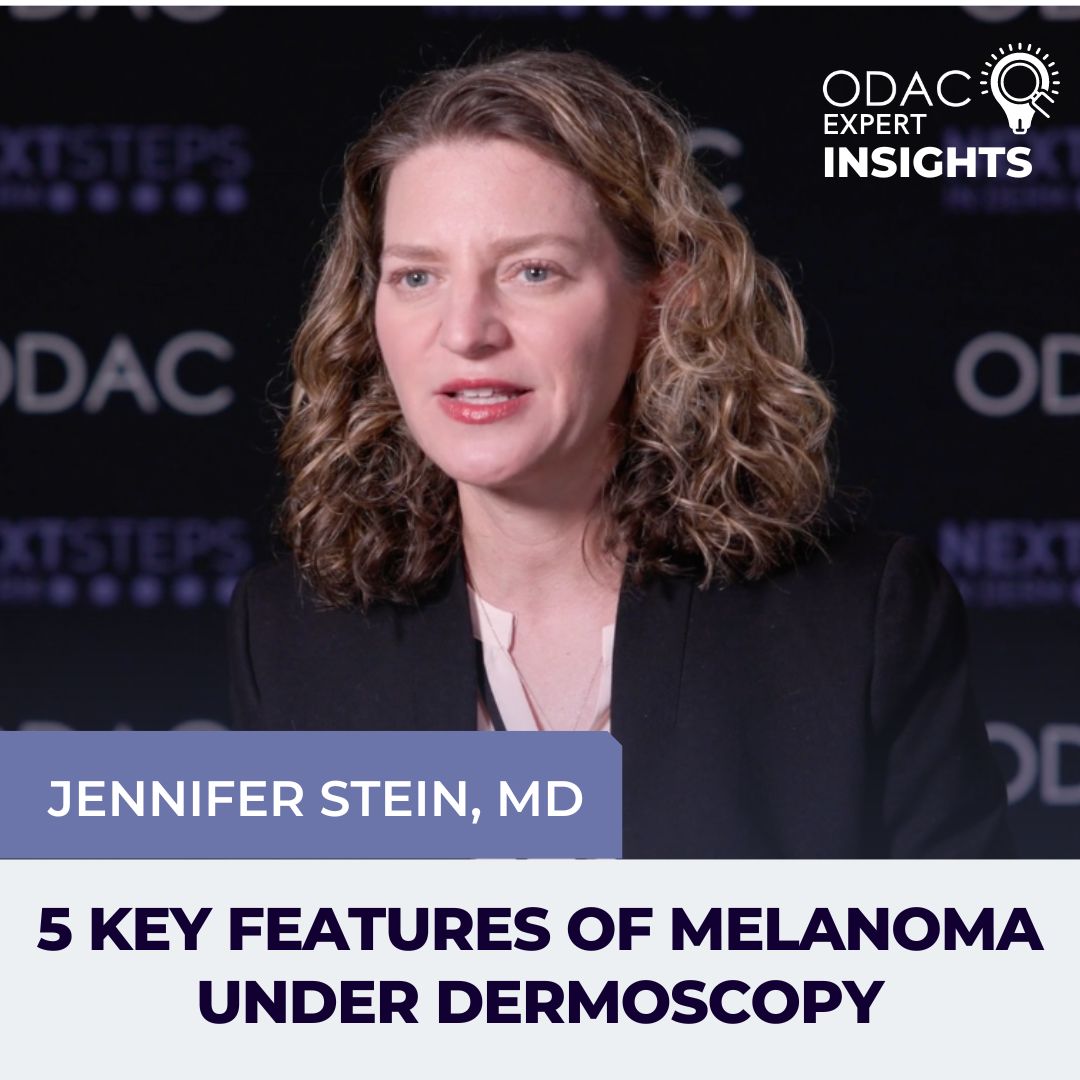Next Steps in Derm, in partnership with ODAC Dermatology, Aesthetic & Surgical Conference, interviewed Dr. Jennifer Stein, professor of dermatology at the Ronald O. Perelman Department of Dermatology at NYU Grossman School of Medicine. Watch as Dr. Stein shares five indicators of melanoma that you should look for when using dermoscopy. Find out what differential diagnoses to run through if you identify a certain feature. Learn why it’s important to have a device with both polarized and non-polarized light. Want some practice identifying melanoma? Dr. Stein shares a tip for practicing your dermoscopy skills.
Further Reading
If you want to read more about dermoscopy, check out the following articles published in the Journal of Drugs in Dermatology:
ABSTRACT
Background: Patients with multiple actinic keratosis (AK), have pre-neosplastic abnormalities, constituting the sites of new tumors, this region is called the cancerization field. Due to the risk of malignant transformation, rigorous evaluation, follow-up, and treatment of the cancerization field is proposed. Recently, non-invasive diagnostic technologies such as confocal reflectance microscopy (RCM), detect AK, intraepithelial carcinomas (IEC), and SCC, without the need of repeated biopsies. There are few reports of the progression of AK assessed by dermatoscopy and RCM concomitantly.
Objectives: Define morphological patterns and clinical applicability of dermatoscopy and MCR examinations of the AK lesions and their degrees of progression to IEC and SCC.
Methods: A retrospective cross-sectional study of dermatoscopy and RCM examinations was performed in 30 patients with histopathological diagnosis of AK (20), IEC (6), and SCC (4).
Results: In the comparative analysis of the dermatoscopic features, erythema was present in 100% of the lesions, the red pseudo-network in 75% of the AK (P=0.007), and linear and irregular vessels in 90% of the lesions of IEC/SCC. In the RCM of AK, the most striking finding was the presence of atypical honeycomb in the spinous layer, but typical in the granular layer. While the IEC/SCC group presented irregular epidermal architecture and atypical honeycomb in all epider-mal layers, it also showed a higher prevalence of individual corneocytes and nucleated cells, cellular pleomorphism, and nuclear atypia in the dermal papillae, irregular vessels within papilla, and cells with bright edges and dark central nuclei in the dermis.
Conclusion: Dermoscopy and RCM may be considered as auxiliary methods for assessing lesions resulting from ke-ratinocyte atypia. The results of this study are consistent with published studies and it was possible to propose, with literature support, a model of progression of AK to IEC and SCC.
ABSTRACT
Objective: A 31-gene expression profile (31-GEP) test that predicts metastatic risk in patients with cutaneous malignant melanoma (CMM) has previously been validated and is available for clinical use. The test dichotomizes patients into lower risk and higher risk groups based on differences that correspond to unique genetic expression patterns. Although the impact of such a test on dermatology providers’ clinical decision-making has been studied, little is known about whether there exists an association between certain clinical features, such as dermoscopy, and 31-GEP results.
Methods: In this retrospective analysis of 31-GEP test results ordered by dermatologists, we evaluated the frequency of dermoscopic features, using a modified dermoscopy three-point checklist, in 17 cases (n=17) and compared these findings to other key clinicopathologic features including tumor thickness, ulceration, and mitotic rate to 31-GEP results. Additionally, we evaluated the dermatologist’s perspective and incorporation of GEP testing as part of patient discussion on melanoma management.
Results: 31-GEP stratified patients into 4 groups; groups 1A and 1B are considered low risk of metastasis or recurrence, while 2A and 2B are considered high risk. Of the 17 cases, we had fifteen group 1A (88.23%), one 1B (5.88%), and one 2B (5.88%) result. Overall frequency of dermoscopic features is as follows; 100% of lesions presented with asymmetry, 47% with round structures, and 70.6% with blue-white color. The average time providers spent explaining and ordering the test was 15 minutes, with a range of 10 to 20 minutes.
Conclusions: This study represents our experience and understanding of the dermatologist’s role ordering 31-GEP in the care pathway of melanoma patients and we recommend that dermatology providers consider ordering the test for newly diagnosed CMM patients.
Did you enjoy this video? Find more here.

